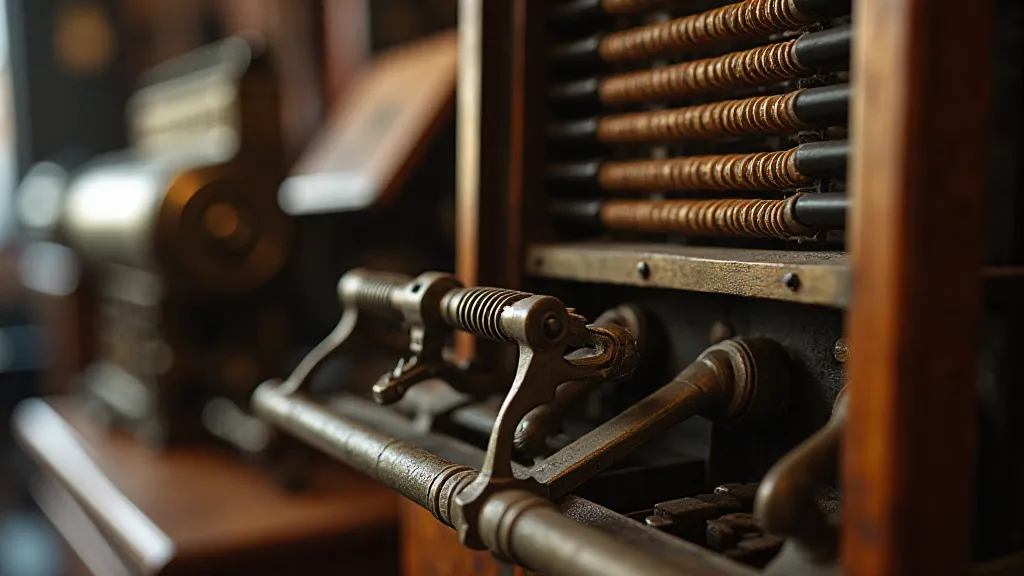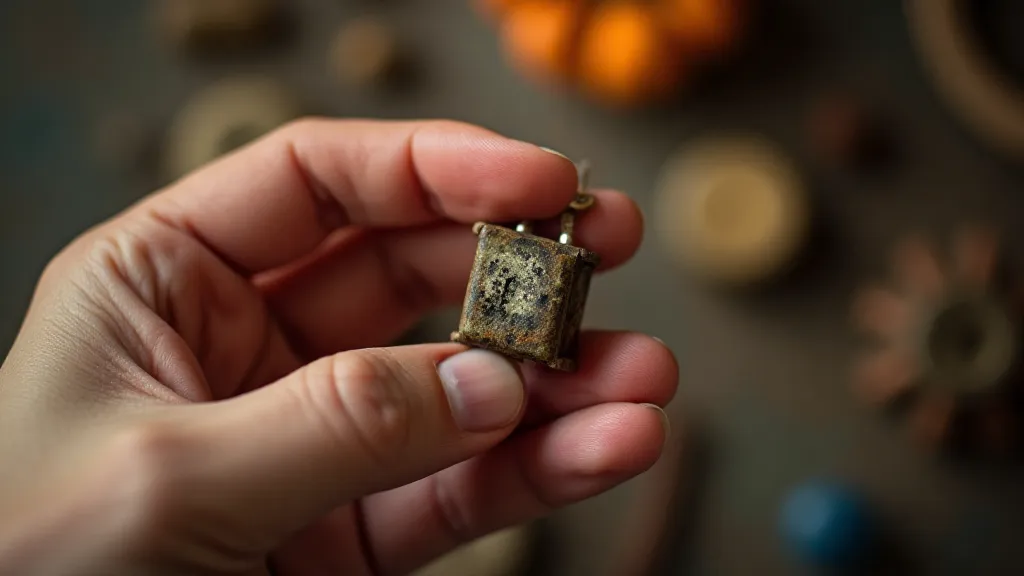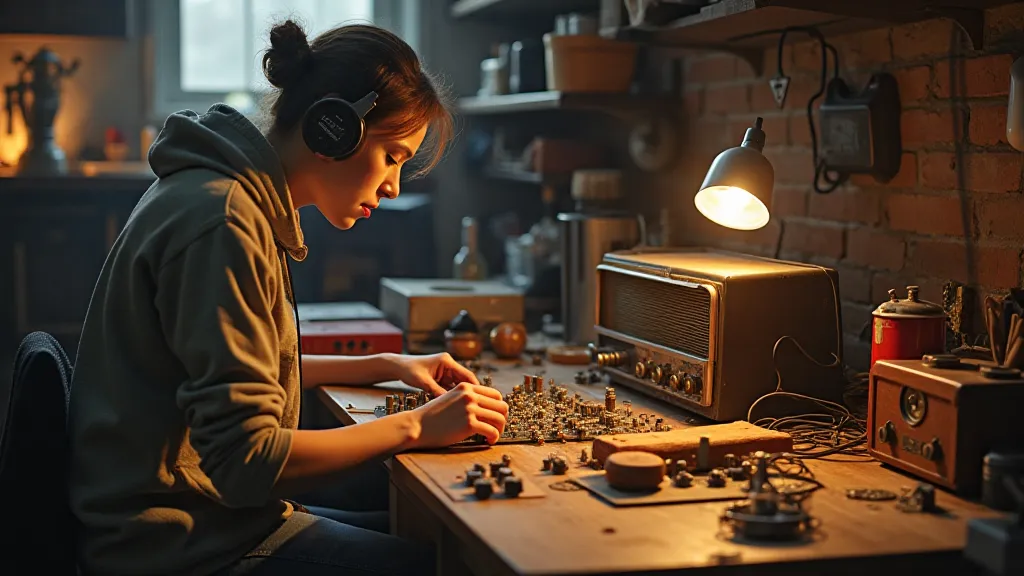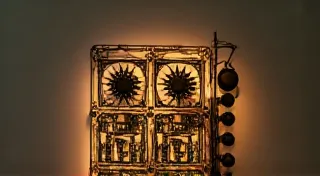The Alchemist's Crucible: Repurposing Old Electronics into Artistic Creations
There’s a particular melancholic beauty to antique accordions. Their bellows, once filled with the joyous music of celebrations and dances, now sit silent, their keys yellowed with age. The wood, intricately carved and polished, bears the marks of countless hands. Holding one feels like holding a fragment of history, a whisper of a bygone era. It’s a feeling I understand deeply, because it’s the same feeling I get when I look at piles of discarded electronics.
We live in an age of planned obsolescence. Devices become outdated almost as quickly as they'll arrive. Smartphones, computers, radios - they all seem destined for a landfill. But what if, instead of relegating these technological relics to a pile of junk, we could breathe new life into them? What if we could transform the discarded and the obsolete into something beautiful, functional, and truly unique? That’s the heart of the "alchemist's crucible" - the creative process of repurposing old electronics.

The Echoes of Innovation: A Brief History
The desire to create and innovate isn's new. The first electrical circuits were marvels of ingenuity – flickering arc lamps, clunky telegraph machines, vacuum tube radios that crackled with static. Each generation built upon the knowledge of the last, pushing the boundaries of what was possible. Looking back at these early inventions, one can't help but appreciate the sheer effort and skill that went into their creation. Think of the meticulous hand-winding of coils, the precise placement of resistors – a far cry from today’s automated processes. The elegance and ingenuity of early designs truly stand out, and often inspire new approaches to problem-solving, even in modern contexts.
These early electronics are tangible reminders of human ambition and ingenuity. They're more than just circuits and components; they're stories waiting to be told. And by repurposing them, we’re not just recycling materials; we’re keeping those stories alive. Often, repurposing requires a nuanced understanding of those original designs – and sometimes, creating custom enclosures to protect and showcase the revived electronics becomes a crucial part of the project, as seen in The Sculptor’s Hand: 3D Printing Custom Enclosures for Electronics Projects. The marriage of vintage components and modern 3D printing can produce remarkable results.
Beyond the Landfill: Finding Your Treasure
Where do you start? Scour flea markets, estate sales, and online marketplaces. Look for discarded radios, old computers, broken toys, even defunct musical instruments. Don's be afraid to embrace the imperfect. A cracked screen, a blown capacitor – these are not flaws, but opportunities. They're character marks that add to the story of your creation. Think about the radio projects discussed in many maker communities – often, a seemingly broken radio’s cabinet is the most valuable part, begging for a new purpose.
My first major project involved an old, non-functioning tube radio. The speaker was shot, the tubes were long gone, but the cabinet was beautiful – a stunning example of Art Deco design. I stripped it down, carefully preserving the housing, and used its shell to house a Raspberry Pi-powered ambient lighting system. The warm glow emanating from that repurposed radio cabinet now evokes the feeling of a bygone era, a subtle nod to its original purpose. This sort of ambient system often relies on understanding how to interact with sensors to create dynamic responses—a topic explored in depth within Circuitry as Poetry: Translating Emotion into Electronic Response. Imagine an ambient lighting system that shifts hues based on ambient sound or even inferred emotional state—the possibilities are limitless.
The Fundamentals: Basic Circuitry and Component Understanding
Repurposing electronics isn’t just about aesthetics; it's about understanding how things work. While advanced electronics projects require in-depth knowledge, you don't need to be an electrical engineer to get started. A basic understanding of circuitry is invaluable.
Familiarize yourself with common components like resistors, capacitors, transistors, and diodes. Learn how they function and how they interact within a circuit. Online resources and introductory electronics books are excellent starting points. Practice identifying components and tracing circuits. The ability to read a schematic, even at a basic level, will greatly enhance your ability to salvage and repurpose. The world of electronics and the electromagnetic spectrum holds endless opportunities for exploration. Consider investigating and learning to detect and analyze electromagnetic fields – a fascinating area for those seeking deeper insights into how devices operate.
Safety is paramount. When working with electronics, always disconnect power sources. Be mindful of capacitors, which can store dangerous amounts of energy even when the device is unplugged. Research appropriate safety precautions and wear appropriate protective gear. Beyond the technical aspects, understanding how devices interact with their environment, including the subtle energies around us, is a crucial aspect of responsible repurposing.
From Function to Art: Project Ideas and Inspiration
The possibilities for repurposing electronics are virtually limitless. Here are a few ideas to spark your creativity:
- Interactive Light Sculptures: Use salvaged LEDs and microcontrollers (like Arduino or Raspberry Pi) to create dynamic light installations that respond to sound or movement.
- Kinetic Art Machines: Combine motors, gears, and mechanical components from old toys to build whimsical, self-moving sculptures.
- Repurposed Speakers: Transform old speakers into custom amplifiers or unique audio art pieces.
- Electronic Musical Instruments: Combine salvaged components to create experimental musical instruments with unusual sounds and textures.
- Pixel Art Displays: Utilize old LCD screens or build your own pixel art displays using LEDs.

The Rewards of Reclamation: More Than Just Recycling
Repurposing electronics isn’t just about recycling; it's about embracing creativity, connecting with history, and finding beauty in the unexpected. It's a meditative process that requires patience, problem-solving skills, and a willingness to experiment. There's a profound satisfaction in taking something discarded and transforming it into something new and meaningful.
The craftsmanship evident in these older devices is often breathtaking. The precision of the wiring, the quality of the materials – it speaks to a time when things were built to last. By giving these pieces a second life, we honor the skill and dedication of the artisans who created them. The principles of navigation and sensing, once reliant on mechanical devices like compasses, now incorporate advanced sensor fusion—a core concept in modern technology, and a testament to the ongoing evolution of innovation.
Collecting and Restoration: A Harmonious Blend
For some, repurposing might involve a light touch of restoration before the creative transformation. Cleaning up a corroded circuit board, replacing a faulty switch – these can be rewarding tasks in themselves. Collecting vintage electronics can also enrich the repurposing process. Knowing the history of a device – its original purpose, its era – can inspire unique and meaningful creations.
Think of it as a symbiotic relationship. Collecting provides the raw materials and historical context, while repurposing breathes new life into them. It’s a way of preserving history while embracing innovation. Consider how those early innovations, once seemingly simple, paved the way for complex sensor arrays – a fascinating area of study for anyone interested in the progression of technology.

The alchemist’s crucible awaits. The discarded pile is not a graveyard of obsolete technology, but a treasure trove of creative potential. With a little ingenuity and a passion for the past, you can transform the forgotten into something extraordinary. Consider the challenges inherent in harnessing and controlling energy—a principle that drove innovation throughout history and continues to inspire new technologies today.





